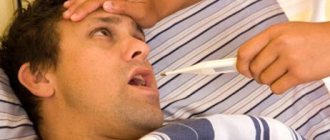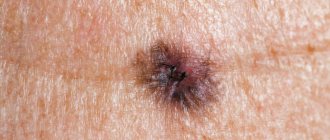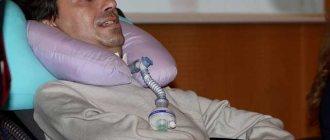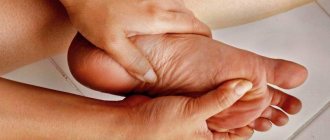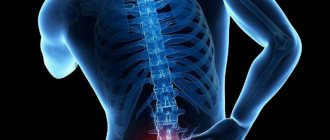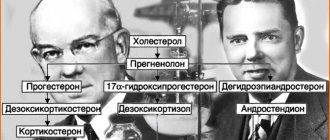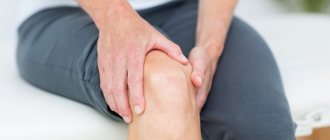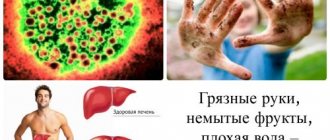Harm and Consequences of Physical Inactivity for Health
Surprisingly, in our age of a huge flow of rapidly changing information and high speeds, civilized humanity is literally dying from a lack of movement - physical inactivity. In the process of the development of civilization, hard physical labor was replaced by the work of machines and devices, and now people do not need to expend much effort to obtain their daily bread. It would seem, what's wrong with this? But here lies a hidden trap, or, if you like, a time bomb. Even to the nearest store, many people only go by car. One of the common activities is eating in front of the TV, often while lying down. We don’t even try to entertain ourselves – our loved ones, leaving this right to television. Too lazy to even get to the theater. And indeed, it’s worth thinking about when was your last visit to the theater or walk in the forest or park?
Consequences of physical inactivity and obesity
Doctors have long established that one of the risk factors is insufficient physical activity - physical inactivity. It causes premature aging, metabolism slows down, weight increases, which leads to the development of various diseases. With a sedentary lifestyle, the symptoms of approaching old age appear much earlier and intensify every day. This is manifested by a decline in physical strength and depletion of intellectual abilities.
The human body works on the principle of an energy-saving system - unused functions gradually fade away: if we don’t strain our brains, we become dull, if we don’t strain our muscles, we become weaker. Movement is food for the muscles of the human body. Without this “nutrition” the muscles quickly atrophy. The harm of physical inactivity to health also lies in the fact that muscle mass decreases, and the fat layer, on the contrary, increases. This leads to obesity, but it is dangerous not only in itself.
Physical activity is a biologically determined necessity, neglect of which leads not only to sagging and sagging skin, loss of an attractive figure, but also to the development of diseases:
- of cardio-vascular system. The layer of fat accumulated in the abdominal cavity begins to interfere with the movement of the diaphragm, reducing the respiratory excursion of the chest, the heart is covered with fat, which interferes with its contractile movements, depending on the degree of obesity, the size of the heart may also change (it can be up to 2 times higher than normal) etc.;
- respiratory functions are impaired, lung volume decreases, metabolic processes in the lungs become difficult - people with large weights often suffer from acute respiratory infections, bronchitis and pneumonia;
- the musculoskeletal system suffers, the spine is bent, stooping occurs, the chest becomes narrow and sunken, coordination of movements is impaired, muscle and vascular tone decreases, pain appears in the limbs and various parts of the spine;
- the gastrointestinal tract is overloaded, and as a result, its anatomy changes, secretory function increases and, as a result, gastritis, hemorrhoids, and chronic colitis develop;
- the liver and pancreas are affected;
- blood clotting increases;
- impotence develops in men, infertility is diagnosed in women in 50% of cases, and menstrual irregularities are possible;
- Metabolism is disrupted, and essential substances - phosphorus, calcium, iron, nitrogen, sulfur and others - begin to be actively removed from the body.
The human body has a large reserve. Only 35% of its functionality is used in daily activities. Without training, unused functions gradually atrophy, as a result of which the body's reserves are depleted, and a person loses the ability to adapt to changing living conditions. The lack of systematic physical activity leads to the fact that already at the age of 12-13 years the respiratory and cardiovascular systems begin to age.
The harm of physical inactivity for health also lies in the fact that, simultaneously with a decrease in physical performance, resistance to extreme influences decreases - oxygen starvation, sudden changes in atmospheric pressure, cold, heat. Regular physical activity supports the immune system, which allows the body to resist even the development of cancer.
Hypokinetic disorders are a whole complex of disorders that include significant negative changes at all levels of the body’s activity that arise as a result of decreased physical activity. The consequences of physical inactivity are insomnia, lethargy, drowsiness, bad mood, weakening of cognitive abilities, especially memory and attention, increased irritability, aggressiveness, and decreased overall physical activity.
Akinesia and rigidity
Options for reducing motor activity are: akinesia - lack of movement, bradykinesia - slowness of movement, oligokinesia -
lack of movement, hypokinesia - lack of motor activity. With these changes in motor functions, inertia of rest and movement also appears, an extension of the latent period between the stimulus and the response to it, a deterioration in the ability to regulate the speed of movement, and a change in the nature and pace of repeated motor acts. All these clinical phenomena “conceal the expressiveness” of movements and actions and are not directly dependent on the severity of the usually accompanying increase in muscle tone of the plastic type (muscle rigidity).
A decrease in motor activity in parkinsonism is associated with a lack of motivation and initiative to move, with difficulty for the patient to begin movement, while overcoming excessive rest inertia. At the same time, muscle strength is preserved, although the achievement of its maximum appears belatedly. As a result, the patient develops motor passivity, slowness, and sometimes he can maintain a fixed position for hours, reminiscent of a patient in a stuporous state in such cases.
A manifestation of decreased motor activity and increased muscle tension can be hypomimia - poor facial expressions, hypophonia - weakened sonority and monotony of speech, micrographia - small handwriting. Characterized by a violation of physiological automated, friendly movements - synkinesis (for example, acheirokinesis - the absence of friendly movements of the hands when walking).
The mask-like appearance of the face, combined with general hypokinesia, in which the typical individual characteristics of gait, gestures, facial expressions, typical for each person, and the individual manner of holding and speaking inherent in each person are lost, make patients with akinetic-rigid syndrome characteristic of parkinsonism similar to each other. With severe akinetic-rigid syndrome, only the eyes, or rather the gaze, retain their mobility.
The study of akinesia confirms that the basal ganglia are important in the initiation (launch) of movement and the automated execution of actions in accordance with previously acquired motor skills. Neurochemical studies have established that hypokinesia is a consequence of a dopamine deficiency occurring in the striatal system, caused by insufficient function of nigrostriatal neurons located in the substantia nigra. The cause of this neurological pathology is the development of degenerative processes in the substantia nigra, which was established in 1919 in the laboratory of the clinic of nervous diseases of the Faculty of Medicine of the University of Paris by our compatriot K.N. Tretyakov. As a result, strio-pallidal cholinergic neurons located in the striatum are disinhibited, which results in excessive inhibition of the pallidal system, which stimulates active motor acts.
In addition, the development of akinesia can also be influenced by damage to the dopaminergic, nigroreticular neurons contained in the substantia nigra, the axons of which are directed to the reticular formation (RF) of the trunk. There, impulses are switched to nerve cells, the axons of which participate in the formation of the reticulospinal tract. A decrease in the intensity of impulses passing along the reticulospinal tract causes inhibition of gamma motor neuron cells, which helps to increase the tone of striated muscles and at the same time leads to the development of muscle
rigidity. It cannot be ruled out that in the pathogenesis of hypokinesia-akinesia and slowness of thinking (akairia), a certain role is played by inhibition of the functions of the cerebral cortex, which occurs as a result of the suppression of the influence of the activating reticular formation on it, described by G. MegunomiR. Moruzzi (Ma-goun H., Moruzzi R., 1949).
Rigidity is a constant presence of muscles in a state of tonic tension, which is characteristic of both agonist and antagonist muscles, and therefore the plastic nature of the increase in muscle tone is manifested. During passive movements in the patient's limbs, the examiner feels an unchanging, viscous, waxy resistance. The patient himself primarily complains of stiffness.
With akinetic-rigid syndrome in the initial stage of its development, muscle rigidity in Parkinson's disease is usually asymmetrical and can manifest itself in any one part of the body, but later, as the disease progresses, it becomes more widespread and generalized over time.
The patient’s posture changes (Fig. 5.3): the head and torso are tilted forward, with the chin often almost touching the chest, the arms are pressed to the body, bent at the elbow and wrist joints, the fingers are bent at the metacarpophalangeal joints and straightened at the interphalangeal joints, while the thumb is in a state of opposition to the rest. Increased tone in the neck muscles leads to the fact that already at an early stage of the disease, when called, patients tend to turn their entire body or turn their gaze as much as possible, leaving their head motionless.
The main differences between rigidity and spasticity are:
1. Distribution of zones of increased muscle tone: rigidity is manifested in both flexor and extensor muscles, but is more pronounced in the flexors of the trunk, and is also significant in the small muscles of the face, tongue and pharynx. Spasticity is combined with paresis or paralysis and, with hemiparesis, tends to form the Wernicke-Mann position (arm bent, leg extended).
2. Qualitative indicators of hypertonicity: rigidity - constant resistance to passive movements, “plastic” tone, positive “lead tube” symptom (with passive movements, muscle resistance is uniform, as when bending a lead tube). The spastic state of the muscles is characterized by the recoil symptom and the “jackknife” symptom.
3. Rigidity is less associated with increased activity of the arc of segmental reflexes, which is characteristic of spasticity and depends more on the frequency of discharges in motor neurons. In this regard, tendon reflexes during ri
fluidity does not change; with spasticity, it increases; with rigidity, clonus and pathological signs characteristic of spastic paresis do not occur (Babinski’s symptom, etc.).
4. An obligatory manifestation of rigidity is the “gear wheel” phenomenon; with spastic paresis, this phenomenon does not occur.
With parkinsonism, the severity of hypokinesia and muscle rigidity may depend to a certain extent on the general condition of the patient. At rest, hypokinesia and muscle rigidity are more pronounced; with slow passive movements, some weakening of rigidity is sometimes observed. Hypokinesia and rigidity are largely influenced by the patient’s mental state, especially negative emotions, which sometimes sharply increase muscle tone. However, in the morning, after sleep, the severity of both components of akinetic-rigid syndrome can significantly decrease. This also sometimes manifests itself in some extreme situations (short-term manifestations of paradoxical kinesia). A slight decrease in the severity of muscle rigidity is also noted during the patient’s stay in a warm bath or during therapeutic massage. All this allows us to judge that the functional defect in akinesia and rigidity is variable within certain limits, in some cases it can fluctuate in severity: from a state of general immobility to episodes of almost complete restoration of the functional capabilities of the motor sphere.
Prevention of negative consequences
To avoid this, you just need to move. Physical activity has a beneficial effect on all functions of the human body. With age, physiological changes in the body are inevitable, but anyone can delay them. To do this, you need to start taking care of maintaining your health at a young age.
Various physical exercises provide a healing effect - jogging in the morning, Nordic walking, swimming, skiing and skating, training on various apparatus in the gym, working in the garden or garden. The daily routine must include intense physical activity. It is necessary to start regular exercise no later than at the age of 30, since it is at this age that all life support systems and the body as a whole begin to age intensively.
Active physical activity for 30 minutes stimulates the production of endorphins - joy hormones. They help improve mood, improve overall well-being and even reduce pain. The amount of enkefamines in the blood increases, stimulating brain function and having a beneficial effect on the function of the central nervous system. Endorphins and enkefamines make it possible to overcome the harm and consequences of physical inactivity - to get out of depression, feel the inner resource, and find peace of mind.
Physical activity is one of the most important natural factors in maintaining health. In a word, MOVEMENT IS LIFE !
What effect does physical inactivity have on the human body?
Long-term hypokinesia (more than 5 - 10 days) in all its forms has a multifaceted, multi-organ, pathological effect on the body, reduces its biological resistance and is a serious nonspecific risk factor for the occurrence of various diseases.
The reason for pathological changes in the disease of an immobile lifestyle is a long-term decrease in the volume of muscle activity, which is accompanied by a decrease in energy consumption. Based on the above, changes in the musculoskeletal system and, above all, muscles are the most significant for the formation of pathological consequences of physical inactivity.
Changes due to muscle inactivity
Muscle contraction occurs when the ATP present in the muscles is broken down and converted into ADP and inorganic phosphorus. This reaction provides the energy needed to contract the muscle fiber. Then, as a result of oxidative processes and associated phosphorylation, ATP resynthesis occurs. With prolonged muscle inactivity, the rate of ATP synthesis decreases due to the weakening of oxidative phosphorylation processes, and a detraining of the main mechanism of energy production in the body occurs. At the same time, significant changes in tissue respiration in the muscles occur:
- the contribution of fatty acids to muscle energy decreases,
- the rate of endogenous (tissue) respiration decreases,
- succinate-dependent respiration is activated,
- creatine kinase activity increases.
Amyotrophy
Simultaneously with the biochemical changes in the muscles that accompany physical inactivity, structural changes occur in them. So-called muscle atrophy develops, the mechanism of which is as follows.
Under conditions of hypokinesia, protein synthesis is weakened along the following paths:
DNA ⇒ RNA ⇒ protein
The processes of catabolism and decay begin to prevail over the processes of anabolism and synthesis. This manifests itself in a decrease in muscle mass (atrophy) and a decrease in body weight.
Hypokinesia leads to a decrease in afferent impulses from the muscles, a weakening of information flows along the efferent and afferent pathways, and this in turn is accompanied by disturbances in the state of the structure, function of synapses and processes of propagation of excitation. The so-called physiological denervation of muscles occurs, in which pronounced atrophic and dystrophic changes appear in their fibers.
Impact on bones
The function of skeletal muscles is closely related to active movements of the skeleton and the functional state of the bones. There is a direct correlative relationship between the functional load of muscles, size, thickness and structure of bones. With physical inactivity, the effect of muscles on bones weakens, and the size and structure of bones may change. Changes in protein-phosphorus-calcium metabolism occur in bones and other tissues. Calcium leaves the bones, which is accompanied by a decrease in their density. An increase in calcium levels in the blood is accompanied by an increase in blood clotting and the formation of kidney stones. In addition, changes in bones can negatively affect hematopoiesis (blood formation).
How physical inactivity affects the cardiovascular system
One of the most important links in the pathogenesis of disorders that occur with physical inactivity is its effect on the cardiovascular system.
Effect on the heart
With prolonged hypokinesia, a pronounced decrease in heart mass occurs. The changes concern the ultramicrostructural elements of the heart, on which oxidative processes in the myocardium and its tissue respiration depend. Heart function becomes less “economical”, which is manifested in increased heart rate, pulse lability, and a decrease in systolic volume and the force of myocardial contractions. The regulation of the functioning of the heart is disrupted, which is manifested by an increase in heart rate that is inadequate to physical activity and tachycardia even at rest. The maximum pressure increases, the minimum decreases, the pulse pressure decreases, and the time for complete blood circulation increases. The electrocardiogram shows signs of deterioration of myocardial trophism and slowing of intracardiac conduction of nervous excitation.
Effect on blood vessels
At the same time, significant changes in blood vessels occur. The development of atherosclerosis during physical inactivity involves a disturbance in the metabolism of serum cholesterol esters, which is combined with dysproteinemia. One of the important mechanisms of hemodynamic disturbances during hypokinesia is the weakening of auxiliary mechanisms of hemodynamics, the “intramuscular peripheral hearts”.
The disease of an immobile lifestyle is accompanied by impaired functioning of the lymphatic vessels. Thus, with insufficient motor activity in the cardiovascular system, serious disorders occur, which are characterized by general detraining, decreased functional potential, and at later stages - atherosclerotic changes.
Effects on the respiratory system
Hypokinesia causes inhibition of basal metabolism by 5-22%, which in turn is accompanied by a decrease in the intensity of gas exchange and a decrease in pulmonary ventilation.
Effect on endocrine glands
Restrictions in physical activity lead to significant changes in structure and function. In experiments on rats, it was shown that at different periods of physical inactivity, phase changes in the mass of the adrenal glands occur:
- on the 1st and 3rd days of the experiment, the mass of the adrenal glands increased compared to the control by 30-35%,
- from the 7th to the 20th day after restriction of physical activity, the mass of the adrenal glands progressively decreased,
- on the 30th day it increased again and reached the initial level.
The content of adrenaline and norepinephrine in the urine during the disease of an immobile lifestyle increased significantly up to the 10th day of the study, on the 20th day it reached the control level, and on the 30th there was a decrease in the level of these hormones. A similar picture was observed when studying the content of 11-hydroxycorticosteroids secreted by the adrenal cortex in the blood of animals at various times after restriction of physical activity. The content of free and total 11-hydroxycorticosteroids increased after 1, 3, 7, 10 and 20 days of physical inactivity, and on the 30th day of the experiment their content was slightly lower than the control level. The amount of bound 11-hydroxycorticosteroids during all periods of hypokinesia was significantly lower than normal. Thus, with an experimental sedentary lifestyle, especially in the early stages, activation of the sympathoadrenal system occurs, accompanied by an increased release into the blood of both the hormones of the adrenal medulla, catecholamines, and the hormones of the adrenal cortex - 11-hydroxycorticosteroids. With continued physical inactivity, the hormonal activity of the cortical and medulla layers of the adrenal glands decreases.
Effect on the nervous system
Due to a significant decrease in afferent and efferent impulses, changes in the central nervous system are included in the pathological process. It is known that proprioceptive impulses are a natural activator of the reticular formation and the hypothalamic-cortical system, which in turn has a tonic effect on the cerebral cortex. Under conditions of physical inactivity, a pronounced decrease in the tone of the cortex and subcortex occurs. Depending on the duration of hypokinesia, the content of endogenous opioid peptides (endorphins and enkephalins) in the brain tissue changes, the normal content and metabolism of which determine the body’s resistance to stress, a person’s performance and mood.
Physical inactivity is accompanied by changes in the autonomic nervous system. Many researchers have paid attention to the undulation and lability of autonomic dysfunctions with a decrease in motor activity. In this state, there is a change in periods of sympatho- and vagotonia. Sympathetic and parasympathetic functions are upset at the integrative level of central regulation. The revealed symmetry, globality and polymorphism of the phenomena that occur during hypokinesia indicate their hypothalamic genesis. There is a pronounced parallelism in the nature and dynamics of both vegetative and accompanying emotional disorders.
Effects on the liver
Physical inactivity negatively affects the condition of the liver, the main biochemical laboratory of the body. Experimental reproduction of the limitation of motor activity in rats allowed us to conclude that under conditions of prolonged hypokinesia, the processes responsible for the physiological renewal and growth of the liver are inhibited. The severity of the identified violations is different and depends on the duration of exposure to the analyzed factor on the body. Inhibition of mitotic activity and reduction in cell size indicate a breakdown of adaptation mechanisms.
Impact on the immune system
Physical inactivity leads to severe disturbances in the body's nonspecific defense mechanisms. This is manifested in the activation of opportunistic and saprophytic autoflora present in the body, and the increased activity of infectious pathogens introduced from outside.
Causes of hypokinesia
Changes in living conditions, everyday life and work of modern people have led to a decrease in their physical activity - hypokinesia. Most of all, these negative changes affected economically developed countries, which is associated with the disappearance of activities that require significant strength and endurance. The widespread use of public and personal transport also leads to a decrease in the total amount of muscular effort, which ultimately determines the peculiarity of the lifestyle of a modern person.
Depending on the causes of hypokinesia, several types of this state of the body can be distinguished:
- Physiological, arising under the influence of genetic factors, the presence of motor “debility” or developmental anomalies;
- Habitual, associated with getting used to a sedentary lifestyle, everyday comfort, neglect of physical exercise and the presence of reduced motor initiative;
- Clinical, developing against the background of injuries or illnesses leading to forced prolonged bed rest. Also, the cause of clinical hypokinesia can be diseases of the musculoskeletal system;
- Professional, caused by limitation of the range of movements due to production needs;
- Climatic-geographical, developing due to unfavorable climatic or geographical conditions that limit physical activity;
- School disease, which occurs in children due to improper organization of the educational process: ignoring physical and labor education, overload with schoolwork, lack of hobbies and free time.
If hypokinesia is defined by doctors as a decrease in motor activity, then physical inactivity is a set of negative morpho-functional changes in the body caused by prolonged hypokinesia.
Eufillin instructions for use
Have you been trying to cure HYPERTENSION for many years?
Head of the Institute of Treatment: “You will be amazed at how easy it is to cure hypertension by taking it every day...
Read more "
When using a medicine such as Eufillin, its instructions for use say that the drug is a bronchodilator. It is used to treat respiratory tract pathologies in people of all ages. The medicine also helps to dilate blood vessels and relax the muscles of the bronchi. Eufillin is prescribed in a variety of cases. The decision on the duration of treatment and dosage should be made only by a specialist.
Description
OUR READERS RECOMMEND!
Our readers successfully use Normaten to treat HYPERTENSION. Seeing how popular this product is, we decided to bring it to your attention. Read more here...
Euphyllin is a xanthine. The main active ingredient of the drug is aminophylline. The medicine also contains starch and calcium stearate. These are additional substances that allow the active substance to retain its properties. The product is produced in the form of tablets or injection solutions.
The action of Eufillin is aimed at relaxing the muscles of the bronchi and improving the condition of the intercostal muscles. Thanks to the action of the drug, respiratory function improves, the blood is better saturated with oxygen, and the amount of carbon dioxide in it is reduced.
The medicine "Eufillin" also has the following effect on the human body:
- expands the lumen of peripheral vessels;
- reduces pulmonary vascular resistance;
- leads to a decrease in pressure in the vessels of the pulmonary circulation;
- improves blood circulation in the kidneys;
- has a moderate diuretic effect;
- promotes expansion of the bile ducts;
- inhibits platelet aggregation;
- prevents the development of anemia due to deformation of red blood cells;
- reduces platelet formation;
- helps improve blood microcirculation;
- has a tocolytic effect, which leads to an increase in the acidity of gastric juice.
The drug begins to be absorbed into the body immediately after consumption. The effect of the medicine can be felt two hours after taking it. Food may slightly slow down the absorption of the medication.
The drug may pass into breast milk. Its use during lactation is prohibited, since about ten percent of the active substance can pass into mother’s milk, and through it into the child’s body. The drug is also able to penetrate the placenta to the fetus.
For the drug to have a bronchodilator effect, the concentration of the active substance that is included in the tablets is sufficient, not more than twenty micrograms. Higher amounts can cause serious harm to the body. The lower the concentration of the substance in the blood, the better the beneficial properties of the drug will appear.
The kidneys are responsible for the process of excreting the drug. The active substance breaks down in the liver and can gradually be excreted from the body in urine. The time after which the drug can be released is twelve hours.
Hypokinesia and its consequences
The problem of preventing the development of hypokinesia and physical inactivity is of great importance for health. This is due to a deep restructuring of the micro and macrofunctional structures of the human body as a biosystem, and a reduced level of nutritional activity has a complex effect on the human body.
Scientists have found that a decrease in the volume of muscle activity accelerates the aging process of the body, leads to an increase in cardiovascular diseases, the occurrence of digestive disorders, and a decrease in the body’s resistance to various infections.
Hypokinesia and its consequences are the subject of many studies, since the variety of causes of movement deficits, the degree of its severity and duration contribute to the emergence of a fairly wide range of complications in the body - from minor adaptation-physiological to pathological.
If in ordinary life such physiological changes are not always noticeable, then in extreme conditions, when there is a need to mobilize the body’s reserve capabilities, the consequences of hypokinesia appear more obvious.
A decrease in motor activity is primarily reflected in the muscular system, gradually involving all the main systems of the body. Hypokinesia and physical inactivity lead to atrophic muscle changes, general physical detraining, disorders of the cardiovascular system, decreased orthostatic stability, changes in water-salt balance, and bone demineralization. Hypokinesia leads to:
- Reduced functional activity of organs and systems;
- Deterioration of oxygen supply to tissues and the intensity of metabolic processes;
- Decrease in vital capacity of the lungs and intensity of gas exchange;
- A decrease in the force of heart contractions, which is associated with a decrease in venous return to the atria;
- Reduction of cardiac output and mass;
- Deterioration of resistance to various adverse factors;
- Impaired coordination of movements.
The muscles of an anti-gravity nature (neck, back) are considered to be the most resistant to the development of signs of hypokinesia. The abdominal muscles atrophy most quickly, which negatively affects blood circulation, breathing and digestion.
Hypokinesia and physical inactivity
Currently, the problem of limiting the physical activity of a person and, first of all, a healthy person is attracting more and more interest. And this is quite understandable. All types of work associated with the application of significant force and requiring endurance due to prolonged muscle tension gradually disappear. The proliferation of public and private transportation continually reduces the total amount of muscular effort. All this deprives the body of muscle effort. Limitation of muscle function is becoming, to a certain extent, a typical feature of the lifestyle of modern people in developed countries. It appeared relatively recently, but its importance is growing extremely quickly. Back in 1969, Academician A.I. Berg cited the following figures: in all generated energy, the share of muscle effort over the past 100 years has decreased from 94% to 1%. A typical change in the nature of modern work is also the use of relatively small muscle groups during physical work. The replacement of heavy muscular efforts with light ones or their limitation applies not only to the sphere of production, but also to the everyday life of modern man. The modern trend of progress leads to a sharp increase in the volume of systematic muscle activity and a decrease in the intensity of muscle function. Thus, a serious and widespread problem arises of the development of hypokinesia , decreased motor activity and physical inactivity - decreased muscle effort.
Why was it necessary to differentiate these concepts? For example, the physical activity of a housewife is very high, but a medical examination of such persons shows that their physical development and functional condition are more than mediocre. It turns out that with insufficient muscle tension, the flow of tonic impulses from them to the internal organs and the central nervous system decreases. According to experts, this is the trigger for all pathological changes due to insufficient muscle activity. In addition, working with a small range of motion and weak muscle contraction does not provide a healing effect, because is performed with a heart rate of no more than 90-100 beats per minute, and the recognized training threshold exceeds 115-120 beats per minute. In this case, only a small part of the muscle fibers participates in movements, and those that do not work are detrained.
And finally, during monotonous work, a feeling of fatigue appears long before true muscle fatigue, which is associated with the development of inhibition processes in the cerebral cortex. You can verify the imaginary nature of such fatigue by doing exercises.
The types of hypokinesia and the causes of its occurrence are different. It is of interest to classify hypokinesia according to etiological factors, because it makes it possible to outline ways to prevent these conditions.
Table 1
Types of hypokinesia and causes of its occurrence.
| Types of hypokinesia | Classification sign - cause and motivation of hypokinesia |
| Physiological | The influence of genetic factors, the presence of motor “debility”, developmental anomalies |
| Everyday life | Getting used to a sedentary lifestyle, decreased motor initiative, everyday comfort, neglect of physical education |
| Professional | Limitation of range of motion |
| due to production needs | |
| Clinical | Diseases of the musculoskeletal system, illnesses and injuries requiring prolonged bed rest |
| School | Incorrect organization of the educational process: overload with training sessions, ignoring physical and labor education, lack of free time. |
| Climatogeo graphic | Unfavorable climatic or geographical conditions that limit physical activity |
| Experimental | Modeling of reduced DA for biomedical research |
The problem of preventing hypokinesia is of great importance for health. Hypokinesia causes a deep restructuring of the micro- and macrofunctional structures of the human body as a biological system. Low levels of nutritional activity have complex effects on the human body. The variety of causes of movement deficiency, the degree of its severity and duration create a very wide range of changes in the body - from adaptive-physiological to pathological.
In everyday life, the lack of optimal motor activity initially causes only the plantation of the body and its restructuring to a new level of functioning. Such physiological changes do not seem to affect the state of the body. However, in
under extreme conditions, when the need arises to mobilize the body's reserve capabilities, the consequences of hypokinesia become obvious. Further restriction of activity contributes to the emergence of a prepathological state.
The deepening of the signs of hypokinesia is accompanied by pathological changes in the activity of the central nervous system, vegetative functions and metabolic processes in the body. The pathophysiological mechanisms of hypokinesia have been most deeply and comprehensively studied under experimental conditions when preparing a person for space flights. Despite its hypothetical nature, research makes it possible to present a logical chain of pathophysiological mechanisms of hypokinesia . This knowledge is necessary for the development of preventive measures.
With a decrease in motor activity, deep disorders develop primarily in the muscular system, and they already entail a chain of changes in other organs and systems. In poorly functioning muscles, the amount of contractile protein decreases, it disintegrates. The body’s energy resources and reserves of myoglobin, an oxygen reserve, also decrease. Similar changes occur in the heart muscle. Its blood supply deteriorates, which means oxygen consumption decreases, energy reserves decrease, protein metabolism becomes defective, and the heart does not work economically.
Negative changes also occur in the bones. Many researchers note their depletion of calcium salts and the death of osteoblasts - the young initial cells from which bone tissue is formed. And the accumulation of destructive cells - osteoclasts. All this contributes to the morphological restructuring of bones, accompanied by rarefaction of bone matter, which naturally reduces its strength. Degenerative changes also occur in the joints: salts are deposited, stiffness and arthritis occur.
Pathological conditions can arise due to disturbances in water-salt metabolism that occur with inactivity. The release of calcium in large quantities into the blood promotes calcification of blood vessels and leads to the development of atherosclerosis. When calcium is released through the urinary system and deposited in the kidneys, it significantly increases the risk of urolithiasis. Increased release of calcium from the body reduces the strength of the skeleton, promotes the development of dental caries, and reduces the strength of muscle contraction, including the heart. Changes in the calcium balance of the blood disrupt its coagulation system.
The nervous system is also involved in the destructive process. The mobility of nervous processes is transformed, memory and coordination of movements deteriorate, adaptation-trophic function decreases. The ongoing disturbance of lipid metabolism contributes to the deposition of fat in tissues, the growth of passive body weight, and the development of obesity. Due to limited mobility of the chest and weakened respiratory muscles, gas exchange in the lungs and pulmonary ventilation suffer.
This is not a complete list of changes that occur in the human body system during hypokinesia and physical inactivity , which can cause a whole range of diseases. Among them are ischemia, stroke, obesity, urinary and cholelithiasis, intestinal diseases, etc.
A sedentary lifestyle is an unnatural state for a person who has a biological need for movement. This need is defined by the term kinesophilia.
A few more similar articles from our website:
General basics of exercise therapy. Classification of physical exercises.
FORMS OF THERAPEUTIC PHYSICAL EDUCATION ACTIVITIES
Physical exercises and the respiratory system. Part 1
Treatment of hypokinesia
A sedentary lifestyle is an unnatural state for humans. Hypokinesia and physical inactivity are especially dangerous when combined with excess nutrition. This can lead to obesity and related complications.
Almost all studies confirm that physical activity is a natural stimulant of various vital functions of the body. Therefore, treatment of hypokinesia is the prevention of the development of life-threatening disorders.
Since lack of physical activity is quite often caused by lifestyle, first of all, you should think about the motivation to change it. The first step to overcoming hypokinesia is considered to be regular morning exercises. This is a good way to tone up before the work day and the simplest method of increasing physical activity. In the morning complex, you can use various exercises, maintaining the correct sequence:
- Walking and stretching;
- Exercises for the arms and shoulder girdle, abdominal muscles, torso and legs;
- Strength exercises;
- Relaxation exercises;
- Walking, running and breathing exercises.
Walking is good for treating hypokinesia. It is believed that 10,000 steps a day provide the minimum necessary physical activity for a healthy person. You should also try not to use the elevator, and devote your weekends to active recreation.
MedGlav.com
The development of household appliances (home cars) and the construction of homes with amenities (elevator, central heating, water supply, sewerage) reduce the need for movement and physical activity. Currently, the need for physical labor is gradually approaching zero. However, it would be naive to blame the currently widespread coronary heart disease, obesity, peptic ulcers, diabetes mellitus or various mental disorders on technological advances and social progress that make life easier. It would be absurd to call on humanity to renounce the benefits of technological progress. Thanks to them, working time has been reduced and free time, which is rightly considered a social wealth, has been extended.
Lack of movement and the associated lack of muscle activity have a sharply negative effect on the body. Even sick people are not allowed to lie motionless in bed for a long time. All because of the same danger of hypokinesia and physical inactivity. Physical underload affects 80-90% of the working population. Lack of movement negatively affects the compensatory ability of the cardiovascular and nervous systems.
A person who is unaccustomed to physical exercise should begin carefully and with small loads, which can be increased as physical abilities develop. To self-check, you should monitor your pulse rate. The optimal heart rate during physical activity is considered to be 120-140 beats per minute, the maximum permissible is 160 beats.
An essential indicator that regulates the load is well-being. Exercise should be fun and satisfying. But if, 10 minutes after the end of the workout, shortness of breath and palpitations do not go away, if after 2 hours the feeling of fatigue and weakness persists, if sleep is restless the next night, then the load was too great and should be reduced.
In order to avoid lack of movement and introduce the body to physical activity, all that is required is the determination to start and the willpower to continue. A completely healthy person can get advice for studying from the relevant literature. If your health is already compromised, it is useful to consult a doctor. It would be wrong to completely abandon physical exercise, because it cannot be replaced by anything else. Physical culture is sometimes the only means to improve the body’s health and get rid of chronic ailments.
Author: Yanez H.D.
Hypokinesia is. Description, consequences, prevention, types and treatment
Scientific and technological progress has brought many useful things into our lives and has largely freed us from hard physical labor. But he also awarded the person with many serious problems. These are hypokinesia, physical inactivity, chronic fatigue syndrome, stress. According to experts, insufficient physical activity today has become the scourge of civilization and a factor contributing to general degradation. The statistics are inexorable: physical inactivity and hypokinesia take leading positions in the ranking of causes that cause obesity, coronary heart disease, myocardial infarction, and atherosclerosis.
Life on the move
Between 25 and 40 percent of our body weight is muscle. And the ancient Greek scientist Hippocrates called physical activity “food for life.” The key to the normal functioning of all organs and systems of our body is the active work of all muscles. Man as a biological system is created for active activity.
But our age of rapid technology and information space increasingly takes up our time and leaves no opportunity for the development of muscle activity. The concept of “hypodynamia” (from the Greek words hypo - “below”, “under” and dynamikos - “strong”) is known to everyone today. It means a decrease in physical activity. Along with it, a term is often used that characterizes a general decrease in the tempo and range of movements. This is hypokinesia (from the Greek words hypo - “from below” and kinesis - “movement”). And if the first concept refers to a general decrease in activity, then hypokinesia is characterized by a decrease in the amplitude and strength of movements.
Consequences of physical inactivity
A decrease in human physical activity, leading to a decrease in energy consumption, is accompanied by a violation of all types of metabolism, one of the most significant consequences of which is the accumulation of adipose tissue with all the negative consequences for health. The ways of formation and consequences of hypokinesia are presented in the picture above.
To summarize the description of what physical inactivity affects, it can be noted that this extremely adverse effect on the human body reduces its ability to adapt to changing, especially harmful influences of the external and internal environment. This is due to changes in the muscles, central and autonomic nervous system, cortical and medulla layers of the adrenal glands, respiratory organs, specific and nonspecific mechanisms of anti-infective defense, metabolic disorders with the development of obesity that develop during hypokinesia. At the same time, the so-called vicious circle is closed, since the above and many other, less studied, negative consequences of physical inactivity in their development contribute to its progression.
Disappointing statistics
According to information from the All-Russian Research Institute of Physical Culture, about 70% of adult Russians do not engage in physical education. Signs of hypokinesia are observed in 50-80% of schoolchildren. Approximately 90% of Russian students are characterized by low physical activity, and every fifth student has signs of deep hypokinesia.
General indicators of physical performance of the Russian population are declining. And this indicates the prevalence of the main diseases of modern civilization in the country.
Physiological reasons for the development of hypokinesia
This condition, which is characterized by a decrease in strength and range of motion, can be both physiological and behavioral.
Physiological reasons may be related to:
- genetic factors and developmental abnormalities;
- neurological or mental disorders;
- parkinsonism;
- extrapyramidal syndrome.
Often physiological hypokinesia occurs against the background of depressive, catatonic or apathetic stupor.
Other reasons
Among the behavioral factors, the following types of hypokinesia are distinguished:
- Habitual everyday hypokinesia. This is a type of disorder that is caused by addiction to a sedentary lifestyle, reduced motor initiative and neglect of physical education.
- Occupational hypokinesia is typical for workers whose specific activities are associated with the restriction or monotony of work. Programmers, accountants, and economists are at risk.
- School hypokinesia is caused by improper organization of the educational process (overload with homework, ignoring physical education). This type of movement disorder is becoming increasingly widespread.
- Climatogeographic hypokinesia is associated with climatic or geographical conditions that limit physical activity.
- The clinical type is associated with diseases of the musculoskeletal system, illnesses, injuries, in which the patient remains in bed for a long time.
Hypokinesis of individual organs
In addition, a decrease in strength and range of motion can also be observed with hypokinesia of individual organs, the normal functioning of which is associated with muscle activity.
Everyone knows that the myocardium is the thickest muscular layer of the heart, which contracts in a strictly specified rhythm. If myocardial cells receive insufficient nutrition, they lose the ability to contract in the same way as neighboring areas. If these cells still contract somehow, then experts talk, for example, about hypokinesia of the left ventricle or interventricular septum. However, if this part of the heart does not contract at all, then they speak of myocardial akinesia.
Another example: hypokinesia of the gallbladder. In this case, disturbances in the activity of this organ are associated with the work and tone of the sphincters, which are relaxed, so bile either slowly flows out of the ducts (hypotonic type) or does not enter the duodenum at all (hypertonic type).
Main influence
The main negative effect is on the heart and blood vessels. As a result of decreased working capacity, the strength of heart contractions also weakens. And the decrease in vascular tone occurs quite strongly.
Lack of movement has a detrimental effect on metabolism. Therefore, the main results of this condition are vascular atherosclerosis and obesity.
But there is another concept of this term. Zones of akinesia can be associated not only with impaired motor activity, but also with some pathologies of internal organs. For example, akinesia or hypokinesia of the gallbladder is quite often observed, which prevents it from correctly and timely supplying bile to the intestines. This causes serious digestive problems.
If there is a predisposition, this disease can cause cholelithiasis. For proper treatment, it is recommended to consult a doctor and start taking choleretic drugs.
In addition, akinesia can affect the heart, stomach, esophagus, intestines, and other organs. This requires serious treatment, which should be carried out under the supervision of a doctor.
What does hypokinesia lead to?
Whatever the reasons, such a movement disorder leads to the following polymorphic conditions:
- Fat metabolism is disrupted, which leads to an increase in cholesterol levels in the blood.
- Hypokinesia is accompanied by a decrease in protein synthesis, while their breakdown increases.
- Atherosclerosis develops.
- Muscles atrophy and bones decalcify (so-called calcium leaching occurs).
- The water-electrolyte balance of biological fluids is disrupted.
- Endocrine disorders occur.
- Hypokinesia is accompanied by a decrease in the overall immunity of the body.
- Libido is impaired (potency in men, anorgasmia in women).
- The overall tone of the cerebral cortex decreases.
- Hypokinesia is accompanied by an increase in appetite, which leads to overweight and obesity.
- Sleep is disturbed, the emotional state becomes unstable.
- Asthenic syndrome and neurasthenia develop.
The degree of such a disorder is determined based on a person’s energy expenditure and muscle activity in a certain period of time. The degree of hypokinesia varies - from slight to complete loss of motor activity. Based on the form of the disorders, akinesia (limitation of amplitude and range of movements) and bradykinesia (predominance of slow movements) are distinguished.
Hypokinesia, akinesia, stupor
Home»Psychopathology»Hypokinesia, akinesia, stupor
Published: April 20, 2012 at 10:31 am
Motor retardation (hypokinesia) up to immobility (akinesis) in a stupor.
Spontaneous or induced movements are rare, the face is hypo- or amicable. With complete immobility, the patient is almost always speechless (mutism). The patient does not get up, but can look around. The facial expression is indifferent, in some cases an expression of joy, dejection, helplessness, and fear. In cases of severe fear, stuporous patients may be “tense” and appear as if they might take sudden action at any moment.
Sometimes patients refuse food and water (even to the point of requiring artificial feeding). Some make movements to satisfy needs. Others do not do this either, and stool and urine retention occur.
You can tell by looking and tense muscles that the patient is awake. Clarity of consciousness during stupor cannot be judged with accuracy. Sometimes, after emerging from the stupor, the patient can give information about his experiences during his stay in it.
Stupor is not a new symptom in a global sense:
states similar to stupor occur in healthy people with sudden fear, in a state of pronounced fear and helplessness, with panic.
Since contact with a patient in stupor is impossible or difficult, differential diagnosis of stupor is often difficult, and without a neurological examination and history is impossible.
Stupor in schizophrenia (catatonic stupor)
Catatonic stupor is understood as freezing in fear, fright and helplessness during the severe suffering of the Self - consciousness in its various dimensions. Anyone who does not know whether he is still alive, whether he is able to act, is not sure of the unity and separation of his personality from the environment, is capable of freezing in a stupor.
Therefore, everything that leads to the restoration of the authenticity of the self-experience can be of therapeutic value for catatonic stupor. So, if the I-identity is lost, sometimes calling by name is enough to improve the patient’s condition. Another patient can be helped to regain the feeling of his activity by doing physical exercises, breathing exercises, etc. with him. It is clear that in severe cases a purely verbal therapeutic approach is often insufficient. But purely neuroleptic therapy or ECT is not sufficient; the patient must be perceived as an individual.
Some patients can only be brought out of their stupor with great difficulty. But even if they are not objectively responding, it is still useful not to leave them alone in this state, but to stay and talk to them. Sometimes it is possible to take a couple of steps with them - and this is the first therapeutic success on the road to a generally meaningful world.
Other types of catatonic stupor occur when overloaded with hallucinatory and delusional experiences, for example, in ecstasy.
Stupor in severe melancholia: depressive stupor The experience of fear and guilt, devitalization and death, severe helplessness and total inability to make a decision with complete exhaustion of motives can take on such a scale that the patient freezes in a stupor.
It is known from experience that the psychotherapeutic approach to a patient in a depressive stupor is much more difficult than to a patient in a catatonic stupor.
Stupor as an immediate reaction: psychogenic stupor
In some cases, stupor can occur as a reaction to shock, fright, or panic: out of fear, one freezes in a stupor during a catastrophe, during difficult news, and sometimes during an exam.
Stupor-like states in acute exogenous type of reaction
Eg. for poisoning (pharmacogenic stupor, neuroleptics), for encephalitis, for epilepsy.
These types of stupor are diagnosed after a mandatory neurological and paraclinical examination.
Stupor can last from minutes to hours or more. This depends on the type of stupor and the ability to provide adequate therapy.
The effect of hypokinesia on the body
Of course, not all symptoms appear immediately, but the negative impact affects the functions of all internal organs.
The consequences of hypokinesia include:
- general deterioration of human health;
- disruption of the cardiovascular system;
- decreased ventilation;
- stagnation of blood in blood vessels.
Externally, all this manifests itself in swelling of various parts of the body, disruption of the gastrointestinal tract. The amount of joint fluid decreases, and the joints themselves lose their mobility, muscle mass decreases, and bones become brittle.
Just six weeks of bed rest in well-trained and healthy student volunteers resulted in:
- decreased myocardial strength;
- reduction in muscle mass;
- weakening of sexual desire and memory;
- decreased amount of calcium in bones;
- decreased blood volume;
- slowing down reactions;
- lethargy and apathy.
Harm of hypokinesia
Limited activity has a negative impact on human health. Externally, this is manifested by a reduction in muscle mass, bone fragility, and pathological changes in the joints. Inhibition processes begin to predominate in the nervous system, which entails negative changes in the psycho-emotional background.
The appearance of plaques in blood vessels increases the risk of developing heart attacks, thrombosis and congestion.
A sedentary lifestyle contributes to decreased pulmonary ventilation and reduced lung volume. Against the background of weak immunity, any viral or bacterial infection can cause pneumonia. Stagnation of blood and lymph provokes swelling and dysfunction of the digestive system.
All this is accompanied by delayed reactions, apathy and lethargy. Efficiency decreases, quality of life deteriorates.
The treatment is complex but simple
If the degree of development of hypokinetic manifestations is low, it is usually sufficient to increase the level of physical activity. In severe cases, it is first necessary to eliminate the causes that led to the appearance of hypokinesia.
Some cases require drug therapy. Administration of neurotransmitters that improve neuromuscular transmission will help improve muscle tone.
Patients with Parkinson's disease in the early stages are prescribed dopaminergic drugs.
Treatment of conditions such as hypokinesia is possible only with complex therapy, which includes physical therapy and pharmacological drugs.
Preventing the development of the disorder
Preventive measures are based on following the rules of a healthy diet and regular physical activity. It is recommended to take walks and engage in acceptable sports. You don’t have to use an elevator, get to work on foot, etc. All this will have a beneficial effect on the body.
It is important for people with sedentary jobs to take breaks and do at least a minimal warm-up. You should carefully consider improving your workplace, for example, purchasing a chair with a fixed back.
And a few more facts
Numerous studies in this area have confirmed the following data:
- With 49-day hypokinesia in people, there is a significant increase in the concentration of lactic acid in the body tissues and blood.
- After 40 days of limited mobility, athletes experience disturbances in atrioventricular conduction of the heart, shifts in left ventricular systole and a drop in stroke volume.
- With prolonged hypokinesia, the human heart decreases in size, especially its left ventricle.
Thus, maintaining an active lifestyle is essential to maintain health.

